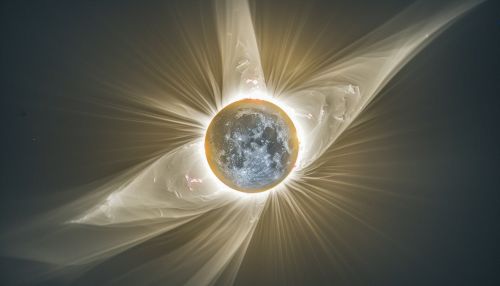Solar Corona
Introduction
The solar corona is the outermost part of the Sun's atmosphere, characterized by high temperatures and low densities. This region of the Sun extends millions of kilometers into space, far beyond the visible disc of the Sun, and is most easily seen during a total solar eclipse, when it is visible as a pearly white crown surrounding the Sun.
Physical Properties
The solar corona is a plasma, a state of matter composed of free electrons and ions. The temperature of the corona is incredibly high, reaching over a million degrees Kelvin, which is much hotter than the surface of the Sun itself, a phenomenon known as the coronal heating problem. Despite its high temperature, the corona emits very little light due to its low density, making it difficult to observe without special equipment.
Structure
The structure of the solar corona is shaped by the Sun's magnetic field. The corona displays a variety of features including coronal loops, coronal holes, coronal mass ejections, and solar flares. These features are all linked to the behavior of the Sun's magnetic field and can have significant effects on space weather and the Earth's magnetosphere.
Observation and Measurement
Observation and measurement of the solar corona are challenging due to its low brightness relative to the rest of the Sun. However, several techniques have been developed to study the corona, including coronagraphs, solar telescopes, and spacecraft missions such as the Parker Solar Probe and the Solar and Heliospheric Observatory (SOHO).


Coronal Heating Problem
One of the most significant problems in solar physics is the coronal heating problem. Despite being further from the Sun's core, the corona is significantly hotter than the Sun's surface. Several theories have been proposed to explain this phenomenon, including magnetic reconnection, wave heating, and nano-flares.
Impact on Space Weather
The solar corona has a significant impact on space weather, particularly through the phenomenon of coronal mass ejections. These are large eruptions of plasma from the Sun that can cause geomagnetic storms and disrupt communications and power grids on Earth.
Future Research
Future research into the solar corona will likely focus on solving the coronal heating problem and improving our understanding of coronal mass ejections. This research is crucial for predicting and mitigating the effects of space weather on Earth.
